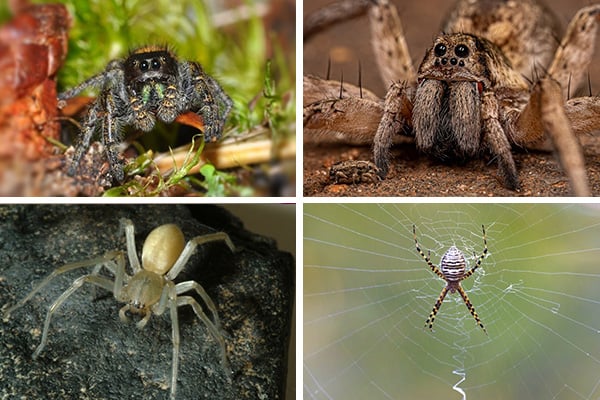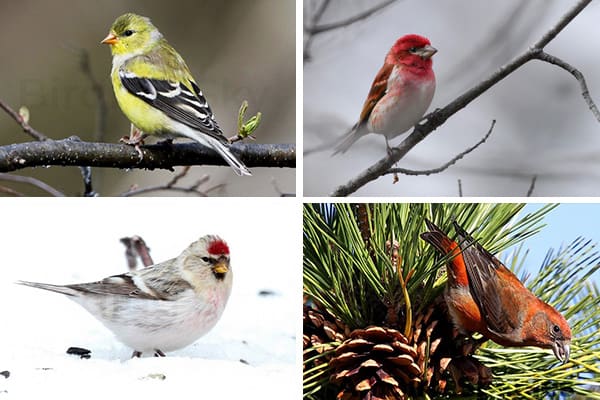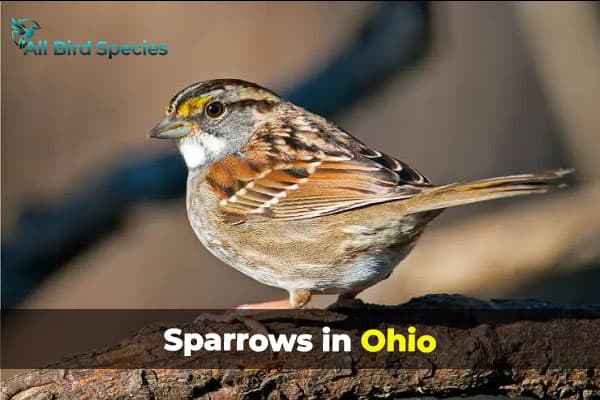10 Woodpeckers in Texas (ID Guide with Pictures)
Woodpeckers in Texas are a diverse and colorful group of birds. They range from the small downy woodpecker to the huge ivory-billed woodpecker, which is thought to be extinct. I researched these amazing creatures and learned about their habits, habitats, and adaptations. In this article, I will share with you some of the most interesting facts and stories about the woodpeckers of Texas.
Key Takeaways:
- Discover the vibrant world of woodpeckers in Texas
- Learn about the physical characteristics and habitats of different woodpecker species
- Explore the behavior and feeding habits of these captivating birds
- Find out about the conservation efforts dedicated to preserving woodpecker populations
- Uncover the unique roles woodpeckers play in the Texan ecosystem
1. Red-headed Woodpecker in Texas

The red-headed woodpecker is a fascinating and visually striking species that can be found in the state of Texas. Known for its vibrant red head and contrasting black and white plumage, this woodpecker is a true marvel of nature.
Physical Characteristics:
- The red-headed woodpecker measures approximately 7-9 inches in length.
- It has a wingspan of about 16-17 inches.
- The bird’s most distinguishing feature is its solid red head, which provides a breathtaking contrast to its black and white body.
- Its back and wings are black, while the underparts are white.
Habitat:
The red-headed woodpecker occupies a variety of habitats within Texas, including forests, woodlands, and open areas with scattered trees. It is commonly found in deciduous forests and along forest edges.
Behavior:
This woodpecker species is known for being agile and acrobatic. It spends much of its time hopping along tree trunks and searching for insects to feed on. It also consumes berries, seeds, and nuts. The red-headed woodpecker is not a migratory bird and can be seen throughout the year in Texas.
Conservation Status:
The red-headed woodpecker population has been declining in recent years due to habitat loss and fragmentation. The destruction of forests and the removal of dead trees, which serve as nesting sites, pose significant threats to this species. Efforts are being made to conserve and protect the red-headed woodpecker and its habitat in Texas.
2. Pileated Woodpecker in Texas
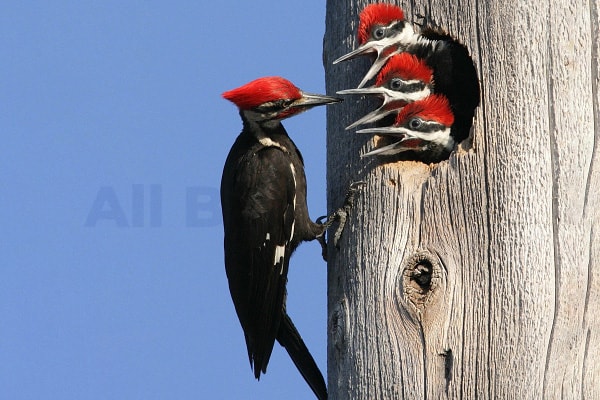
The pileated woodpecker is a stunning and charismatic species that can be found in the forests of Texas. Known for their large size and distinctive appearance, these woodpeckers are a sight to behold.
Appearance: The pileated woodpecker is the largest woodpecker species in North America, measuring about 16-19 inches in length. They have a black body with white stripes on their face and a prominent red crest on their head. Both males and females have similar plumage, with males often having a longer crest.
Habitat Preferences: Pileated woodpeckers prefer mature forests with large trees, especially ones that have plenty of dead or decaying wood. They can be found in various forest types in Texas, including pine forests, oak-hickory forests, and bottomland hardwood forests.
Feeding Habits: These woodpeckers are primarily insectivorous and feed on a variety of insects, including ants, beetles, and termites. They use their strong, chisel-like bill to create rectangular-shaped holes on tree trunks in search of their prey. Pileated woodpeckers also feed on fruits, berries, and nuts, making them opportunistic foragers.
Challenges: Although pileated woodpeckers are not considered endangered, they face challenges related to habitat loss and fragmentation due to deforestation and urbanization. Conservation efforts focused on preserving and restoring suitable habitats are important for maintaining healthy populations of pileated woodpeckers in Texas.
Must Read Black Birds with White Belly
3. Yellow-bellied Sapsucker in Texas

The yellow-bellied sapsucker is a captivating woodpecker species that you can spot in Texas. Known for its distinctive markings and behaviors, this bird adds to the rich diversity of woodpeckers in the state.
The yellow-bellied sapsucker has a black and white plumage, with a touch of yellow on its belly. Males and females share similar appearances, featuring a characteristic red forehead and crown. This woodpecker’s call is a series of mewing notes, making it recognizable even from a distance.
This species is migratory, and you can observe their movement patterns in Texas during the spring and fall seasons. Yellow-bellied sapsuckers prefer forests with deciduous trees like oaks and maples. Their foraging behavior involves drilling rows of small holes in tree trunks to extract sap. They also feed on insects attracted to the sap and may even catch them mid-air during flight.
Yellow-bellied Sapsucker’s Role in the Ecosystem
“The yellow-bellied sapsucker plays a crucial role in the ecosystem as a keystone species,” explains Dr. Maria Johnson, ornithologist at the University of Texas. “Their sap-drilling activities create openings for other birds, such as hummingbirds and warblers, to access the sap and insects. They also unintentionally provide nesting cavities for a variety of bird species.”
The yellow-bellied sapsucker’s activity benefits not only other birds but also certain tree species. The sap wells they create can be an important food source for insects, which in turn attracts insectivorous birds. Additionally, the openings created by their drilling activities can lead to the formation of cavities that become valuable nesting sites for different bird species.
To appreciate the beauty of the yellow-bellied sapsucker and witness its important role in the Texas ecosystem, keep an eye out for this remarkable woodpecker during your outdoor birding adventures.
| DISTINCT FEATURES | MIGRATION PATTERNS | FEEDING BEHAVIOR |
|---|---|---|
| – Black and white plumage – Red forehead and crown – Touch of yellow on the belly | – Migratory species in Texas – Observed during spring and fall | – Drills sap wells in tree trunks – Feeds on sap and insects – Occasionally catches insects mid-air |
4. Downy and Hairy Woodpeckers in Texas
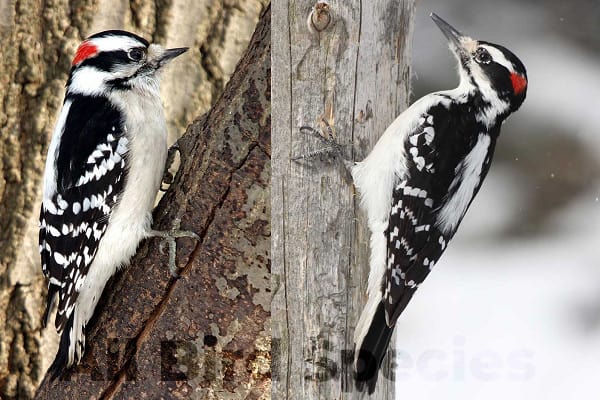
Two species of woodpeckers that you can spot in the Lone Star State are the downy woodpecker and the hairy woodpecker. While they may look similar at first glance, there are some key differences between these two fascinating birds.
Physical Differences
The downy woodpecker is smaller in size, measuring between 5.5 and 6.7 inches in length, with a wingspan of about 10 inches. It has a black-and-white body, a small bill, and white spots on its wings. On the other hand, the hairy woodpecker is larger, ranging from 7.1 to 10.2 inches long, with a wingspan of around 13-16 inches. It also has black-and-white plumage, but its bill is longer and sturdier compared to the downy woodpecker.
Preferred Habitats
Both the downy and hairy woodpeckers can be found in a variety of habitats in Texas. They are commonly seen in deciduous forests, woodlands, parks, and even suburban areas with mature trees. They are highly adaptable and can thrive in diverse environments.
Foraging Techniques
When it comes to foraging, both woodpecker species use similar techniques. They have strong bills that they use to drum on tree trunks to search for insects. They also probe into crevices and use their long tongues to extract prey. Additionally, these woodpeckers feed on tree sap and enjoy visiting suet feeders in backyards.
If you’re lucky, you might even see a downy woodpecker or a hairy woodpecker in your own backyard in Texas! Keep your eyes peeled for these small yet charismatic birds.
| Downy Woodpecker | Hairy Woodpecker |
|---|---|
| Size: 5.5-6.7 inches | Size: 7.1-10.2 inches |
| Wingspan: 10 inches | Wingspan: 13-16 inches |
| Black-and-white plumage | Black-and-white plumage |
| Small, delicate bill | Long, sturdy bill |
| White spots on wings | N/A |
Northern Flicker and Acorn Woodpecker in Texas
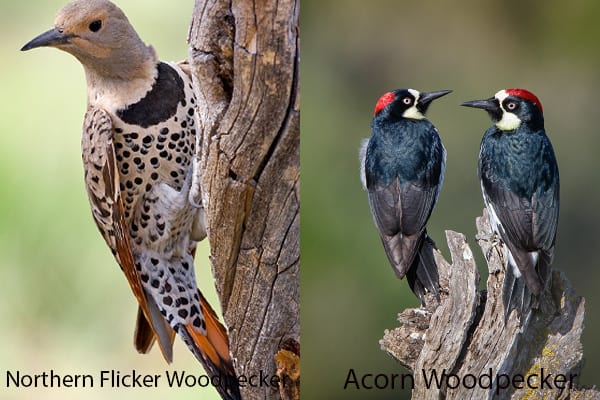
When it comes to woodpeckers in Texas, two distinctive species that capture the attention of bird enthusiasts are the northern flicker and acorn woodpecker. Let’s explore their unique characteristics, nesting habits, and ongoing conservation efforts.
5. Northern Flicker
The northern flicker, scientifically known as Colaptes auratus, is a medium-sized woodpecker species found across North America, including Texas. Sporting a brown plumage with black barring and a prominent white rump, this woodpecker is hard to miss.
One distinctive characteristic of the northern flicker is its behavior of foraging on the ground, probing the soil for ants, beetles, and other insects. They are also known to feast on fruits and seeds, making them versatile feeders.
When it comes to nesting, the northern flicker prefers to excavate cavities in dead or decaying trees. However, due to habitat loss and urbanization, they have adapted to utilizing man-made structures like fence posts and wooden buildings for nesting.
Conservation efforts for the northern flicker in Texas focus on preserving suitable habitats, providing nest boxes, and educating the public about the importance of protecting these charismatic birds.
6. Acorn Woodpecker
The acorn woodpecker, scientifically known as Melanerpes formicivorus, is a medium-sized bird with a distinctive red crown and a black and white body. This species is known for its fascinating behavior of storing acorns in specialized granaries, which are often tree cavities filled with acorns.
Acorn woodpeckers have a complex social structure, living in large family groups with multiple breeding pairs. They work together to collect and store acorns, creating a reliable food source for their community.
When it comes to nesting, acorn woodpeckers excavate their own cavities in dead trees or use natural tree cavities, often sharing them with other small birds or mammals.
Conservation efforts for the acorn woodpecker in Texas include preserving oak woodlands, protecting nesting sites, and maintaining healthy acorn supplies to support their specialized feeding behavior.
Other Woodpeckers in Texas
Aside from the well-known woodpecker species previously mentioned, Texas is also home to several other captivating woodpeckers. These include the red-naped sapsucker, ladder-backed woodpecker, red-cockaded woodpecker, red-bellied woodpecker, and golden-fronted woodpecker.
The red-naped sapsucker is a migratory woodpecker with a stunning appearance. Its red nape and white wing patches make it easily identifiable. This species prefers coniferous forests and woodlands and is known for its unique feeding behavior of drilling rows of small holes to feed on sap and insects.
7. Ladder-backed Woodpecker

The ladder-backed woodpecker, as its name suggests, is recognized for its ladder-like black and white markings on the back. It resides in arid regions and is often found in the mesquite and desert scrub habitats of Texas. Its diet primarily consists of insects, fruits, and seeds.
8. Red-cockaded Woodpecker
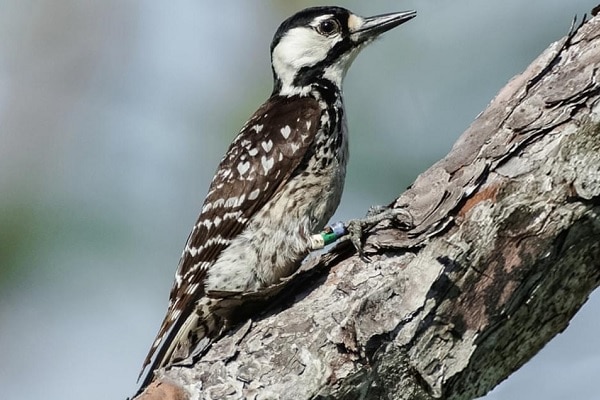
The red-cockaded woodpecker, classified as an endangered species, is predominantly found in longleaf pine forests in Texas. It builds its nests in living pine trees and plays a vital role in maintaining ecosystem balance. Efforts are underway to protect and restore its habitat.
9. Red-bellied Woodpecker
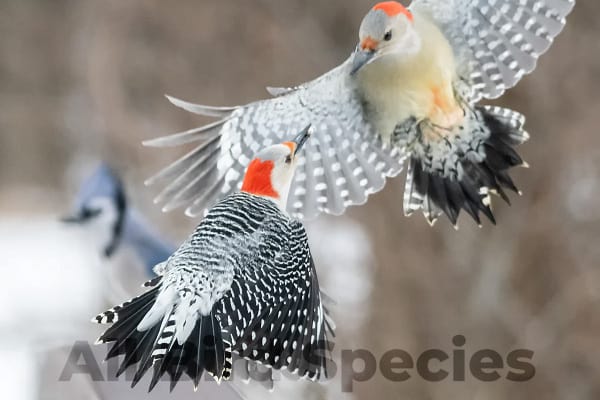
The red-bellied woodpecker, with its vibrant red head and black and white wings, is a common sight in Texas. It inhabits both forests and urban areas and is known for its skills at foraging on tree trunks and branches in search of insects and seeds.
10. Golden-Fronted Woodpecker
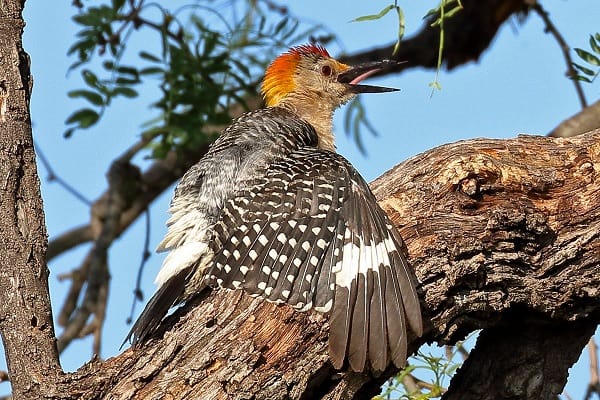
Finally, the golden-fronted woodpecker, with its golden-yellow forehead and red crown, is a characteristic woodpecker species in Texas. It thrives in various habitats, including woodlands, parks, and residential areas, and contributes to insect control by excavating cavities in dead trees for nesting.
These diverse woodpecker species enhance the rich avian biodiversity of Texas. Efforts are being made to conserve their habitats and ensure their continued presence in the state’s ecosystems.


